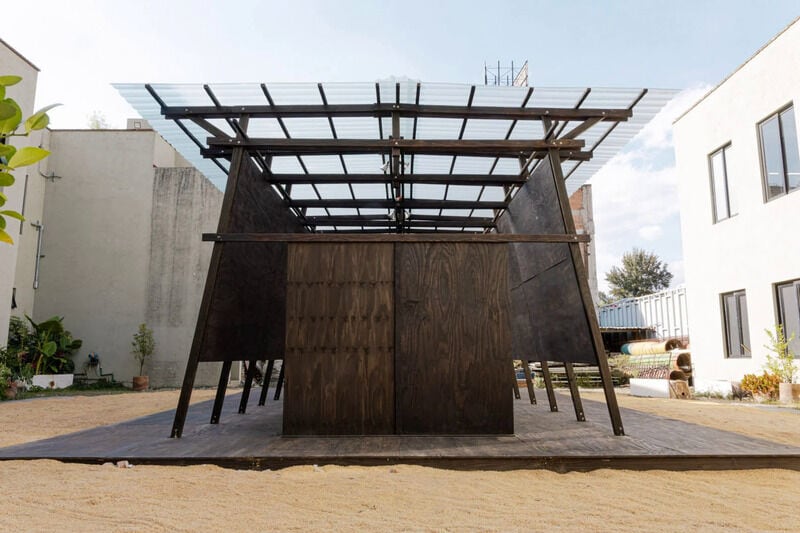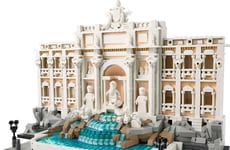
Lanza Atelier Creates the Shou Sugi Ban in Mexico
Amy Duong — January 21, 2025 — Art & Design
References: lanzaatelier & dezeen
Mexican architecture firm Lanza Atelier has created the Shou Sugi Ban pavilion made from wood and steel materials. As the name suggests, the design is inspired by the Japanese technique, and the project was commissioned by the arts agency Base. It is nestled in a courtyard in Mexico City and it is meant to be a space to host events. The Shou Sugi Ban pavilion is made from plywood panels from regenerative forests that are darkened using the Shou Sugi Ban technique.
Base explained the design concept to Dezeen, noting "The idea behind the pavilion's conceptualisation was to construct a space that would allow people a unique opportunity to consider new perspectives through conceptual forms and natural components. The result is a space that not only serves its immediate purpose but also aligns with the long-term vision of experimenting with different materials and testing new structural forms, providing solutions to design and architecture."
Image Credit: Alejandro Ramirez Orozco.
Base explained the design concept to Dezeen, noting "The idea behind the pavilion's conceptualisation was to construct a space that would allow people a unique opportunity to consider new perspectives through conceptual forms and natural components. The result is a space that not only serves its immediate purpose but also aligns with the long-term vision of experimenting with different materials and testing new structural forms, providing solutions to design and architecture."
Image Credit: Alejandro Ramirez Orozco.
Trend Themes
1. Regenerative Wood Use - By employing plywood from regenerative forests, this trend emphasizes sustainability and resilience in construction material sourcing.
2. Cultural Technique Revivals - Reviving the traditional Japanese Shou Sugi Ban technique showcases cultural integration and skill preservation in modern architecture.
3. Conceptual Event Spaces - Innovative pavilion designs are utilized to create immersive, reflective environments for events, enhancing the experiential aspect of public gatherings.
Industry Implications
1. Sustainable Construction - Prioritization of sustainable practices in building materials reveals opportunities for green innovations within the construction industry.
2. Cultural Architectural Design - Interweaving global architectural techniques allows exploration of new hybrid styles in the architectural design industry.
3. Event Planning and Design - Adoption of unique, adaptable pavilion designs can transform the landscape of venues available for diverse event hosting within the event planning industry.
7.6
Score
Popularity
Activity
Freshness























